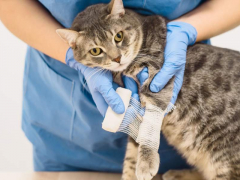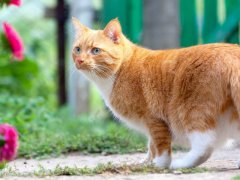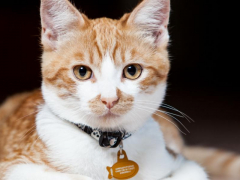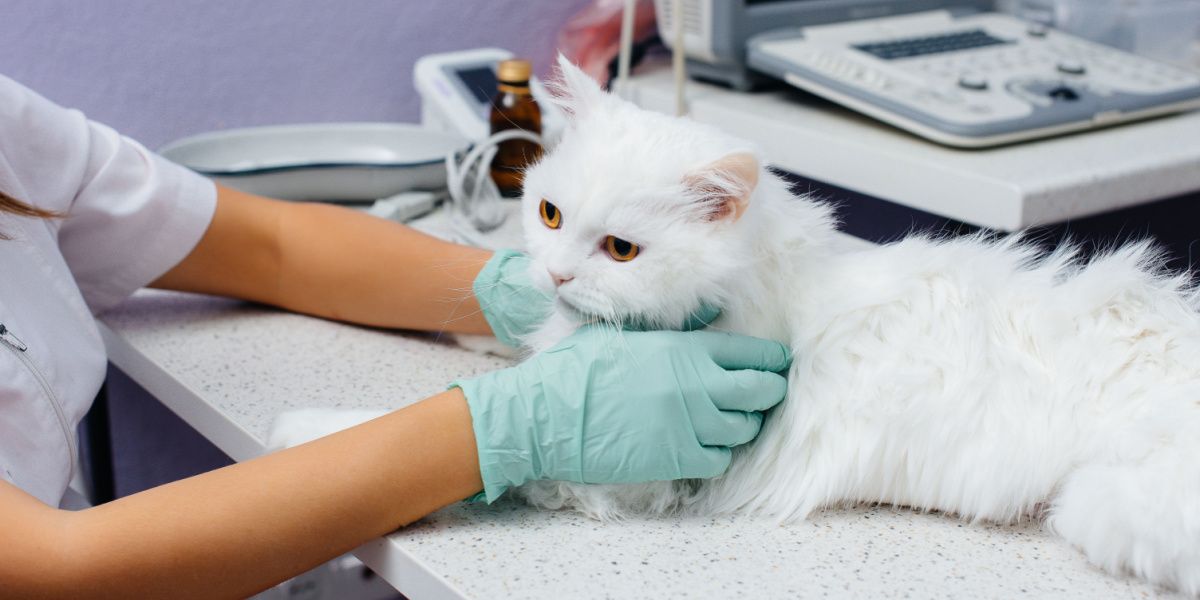
As a cat owner, I know firsthand how unnerving it can be to learn that your cat needs anesthesia. Fortunately, most veterinary practices perform cat anesthesia multiple times each and every day. Also, anesthetic complications are quite rare.
Understanding feline anesthesia and what it entails can help you be better prepared if your cat ever needs anesthesia.
Reasons Cats Need Anesthesia
Your veterinarian may recommend anesthesia for a wide variety of reasons. Common reasons for anesthesia in pets include:
- Spay/neuter surgery
- Abdominal surgery
- Bone fracture repair
- Skin tumor biopsy and/or removal
- Wound cleaning/repair
- Deep ear flush
- Transtracheal wash or bronchoalveolar lavage
- Dental cleaning
- Grooming in a fractious (aggressive) cat
While surgery always requires anesthesia, some cats benefit from anesthesia even for less-invasive procedures. For example, some cats hate having their coat clipped.
If you want your long-haired cat’s coat to be trimmed into a lion cut, your veterinarian may recommend anesthesia to make this procedure safer and less stressful for both your cat and members of the veterinary team.
Types of Anesthetics for Cats
Your veterinarian will select from a variety of anesthetic agents, depending on your cat’s individual health status and the procedure that requires anesthesia.
Injectable Anesthetics
Injectable anesthetics are among the most commonly used anesthetic agents in cats. These medications are often given as an intravenous (IV) injection, although some injectable anesthetics can be given in the muscle.
When used alone, most injectable anesthetics provide only a brief period of anesthesia. Common injectable anesthetics in cats include diazepam, ketamine, propofol, and alfaxalone. Your veterinarian will select the best injectable anesthetic for your cat, based on your cat’s medical history and anesthetic requirements.
Inhalant Anesthetics
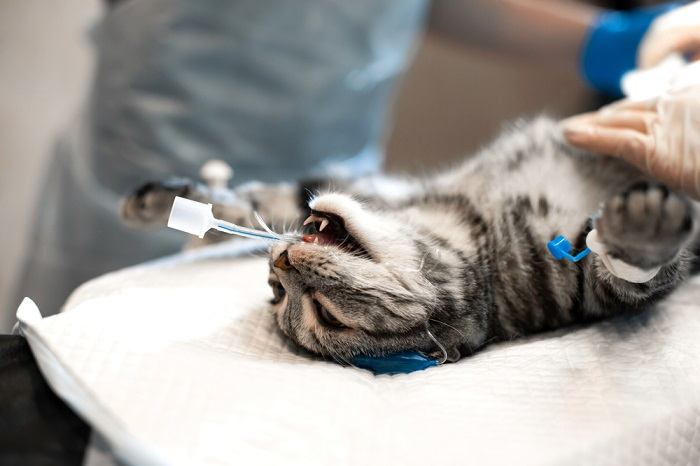
Inhalant anesthesia is more common for longer procedure.
When a prolonged period of anesthesia is required, injectable anesthetic induction agents are often followed by an inhalant anesthetic. After anesthetizing your cat with injectable anesthesia, your veterinarian will place an endotracheal tube in your cat’s trachea (airway).
Endotracheal intubation is used to deliver gas anesthesia to keep your cat anesthetized for a longer period of time. Isoflurane and sevoflurane are the two most common inhalant anesthetics used in cats.
Reversible Sedatives
Some veterinarians may refer to dexdomitor as a reversible anesthetic in cats. While dexdomitor is actually classified as a sedative and not an anesthetic (because cats are typically still capable of reacting to very strong or painful stimuli), sedation can be used in place of anesthesia in some situations.
While it’s not adequate to use as a sole anesthetic agent for surgery, it can be adequate for grooming, wound repair, and other similarly non-invasive procedures. Dexdomitor is an injectable sedative that can be rapidly reversed. For this reason, veterinarians often use dexdomitor in situations where rapid recovery is desirable.
Local Anesthetics
Local anesthetics, such as lidocaine and bupivacaine, are another component of veterinary anesthesia. In some cases, your veterinarian may combine a local anesthetic with a light sedative to perform an uncomfortable procedure, such as placing one or two staples in a skin wound.
In other situations, your veterinarian may administer local anesthetics in combination with general anesthesia, to provide additional pain control during a painful procedure (such as a fracture repair or difficult tooth extraction).
The wide variety of available anesthetic drugs provides your veterinarian with many options to customize your cat’s anesthesia plan. Your veterinarian will consider your cat’s medical history, current health status, and procedure. They will design your cat’s anesthetic plan with the goal of maximizing benefits while minimizing risks.
Side Effects
Just like humans undergoing general anesthesia, cats may experience side effects. Fortunately, most of these side effects are mild and relatively short-lived. The mortality rate associated with anesthesia in cats is low, just one in 895 anesthetized patients.
The most common side effects associated with anesthesia are disorientation and lack of coordination. Your cat may act a bit disoriented for a day or two after anesthesia, and some cats will vocalize (meow or howl) more often than usual. Additionally, your cat may act a bit clumsy until the anesthetic is fully out of their system.
Some cats experience mild gastrointestinal upset after anesthesia. Nausea may result in a decreased appetite, and anesthetic agents may result in changes to your cat’s litterbox habits. In most cases, anesthesia-associated gastrointestinal issues will resolve on their own within a day or two.
Severe or persistent gastrointestinal effects warrant a call to your veterinarian, who will give you instructions or prescribe medications to treat nausea, diarrhea, or constipation.
In rare cases, changes in blood circulation that are associated with anesthesia can damage your cat’s organs. The kidneys are the most common site of anesthesia-associated damage, especially in cats with pre-existing kidney disease.
However, damage to the liver, lungs, eyes, brain and other organs can also occur. Your veterinarian will attempt to minimize the risk of serious side effects by carefully assessing your cat prior to anesthesia, and monitoring your cat’s vital signs closely during anesthesia.
How To Ensure That Your Cat Is Sedated Safely
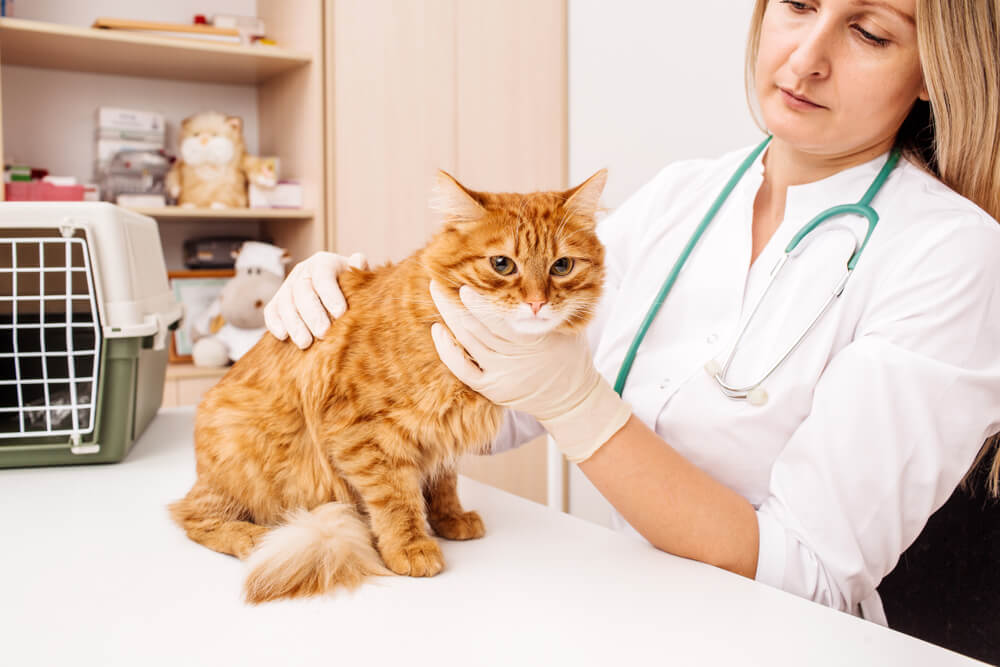
Talk to your veterinarian before your cat is administered anesthesia if you have any questions or concerns.
While anesthesia can never be entirely risk-free, its risks are lower in healthy cats and in cats that receive appropriate anesthetic monitoring.
Before anesthesia, your veterinarian will perform a thorough physical examination. Your veterinarian may also recommend routine laboratory tests, such as a complete blood cell count (CBC), serum biochemistry profile, and urinalysis, to provide the most thorough assessment of your cat’s internal organ function.
Do not forego these tests if they are offered. If your cat has underlying abnormalities or health issues, it’s important to detect these prior to anesthesia. Depending on the health issues that are discovered and the reasons for your cat’s anesthesia, your veterinarian may choose to postpone your cat’s anesthesia until these health issues can be addressed or may choose to make changes in your cat’s anesthesia protocol (drugs and dosages).
Talk to your veterinarian about their anesthetic monitoring practices. Most veterinarians will be more than happy to describe the ways that they will keep your cat safe, and they may even be able to take you on a tour of their treatment area and surgical suite to show you their anesthetic monitors.
Recommended anesthetic monitors for cats include:
- Pulse oximetry (measures heart rate and oxygen levels in the blood)
- Capnography (measures exhaled carbon dioxide levels)
- ECG
- Blood pressure monitoring
- Body temperature monitoring
Your veterinarian or veterinary technician will document anesthesia monitor findings in your cat’s medical record. This will allow them to watch for changes in your cat’s vital signs over the course of your cat’s procedure.
Additionally, your cat should have an intravenous (IV) catheter placed prior to the anesthesia and left in throughout the procedure. Your veterinarian can use the IV catheter to deliver IV fluids, reducing the risk of kidney damage that may occur under anesthesia. An IV catheter also provides a route to administer any drugs that may be needed during the procedure.
How Much Anesthesia Costs
The cost of anesthesia can vary, depending on the anesthetic agents used and the duration of your cat’s anesthesia. In general, you can expect to spend $150-300 on a pre-anesthetic exam, pre-anesthetic laboratory tests, anesthesia, and appropriate monitoring during and after anesthesia.
Low-cost surgical providers may cut corners by limiting pre-anesthetic testing and anesthesia monitoring, so it’s important to be cautious when price-shopping for surgical procedures. Many veterinarians include the cost of anesthesia in their estimates for spay/neuter surgery, dental cleanings, and other procedures.
Summary
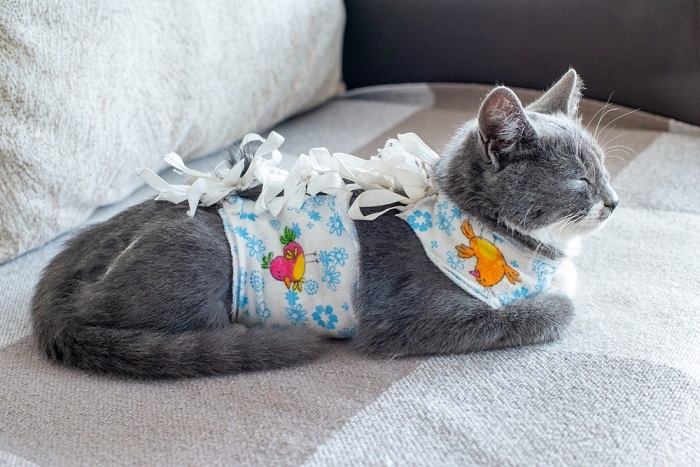
Just like people, cats experience pain and anxiety when undergoing a procedure. Anesthesia can safely ease such symptoms.
Anesthesia is a safe and effective way to minimize your cat’s anxiety and pain levels during a wide variety of veterinary procedures. With the use of appropriate pre-anesthetic testing, anesthetic monitoring equipment, and customized anesthetic protocols, your veterinarian will take measures to make anesthesia as safe as possible for your cat.
Although you may see some lethargy or gastrointestinal effects for a day or two after anesthesia, these effects are typically short-lived and your cat should quickly bounce back to their normal routine.
Also Read: Cat Suddenly Lethargic and Weak: Causes & Treatment
